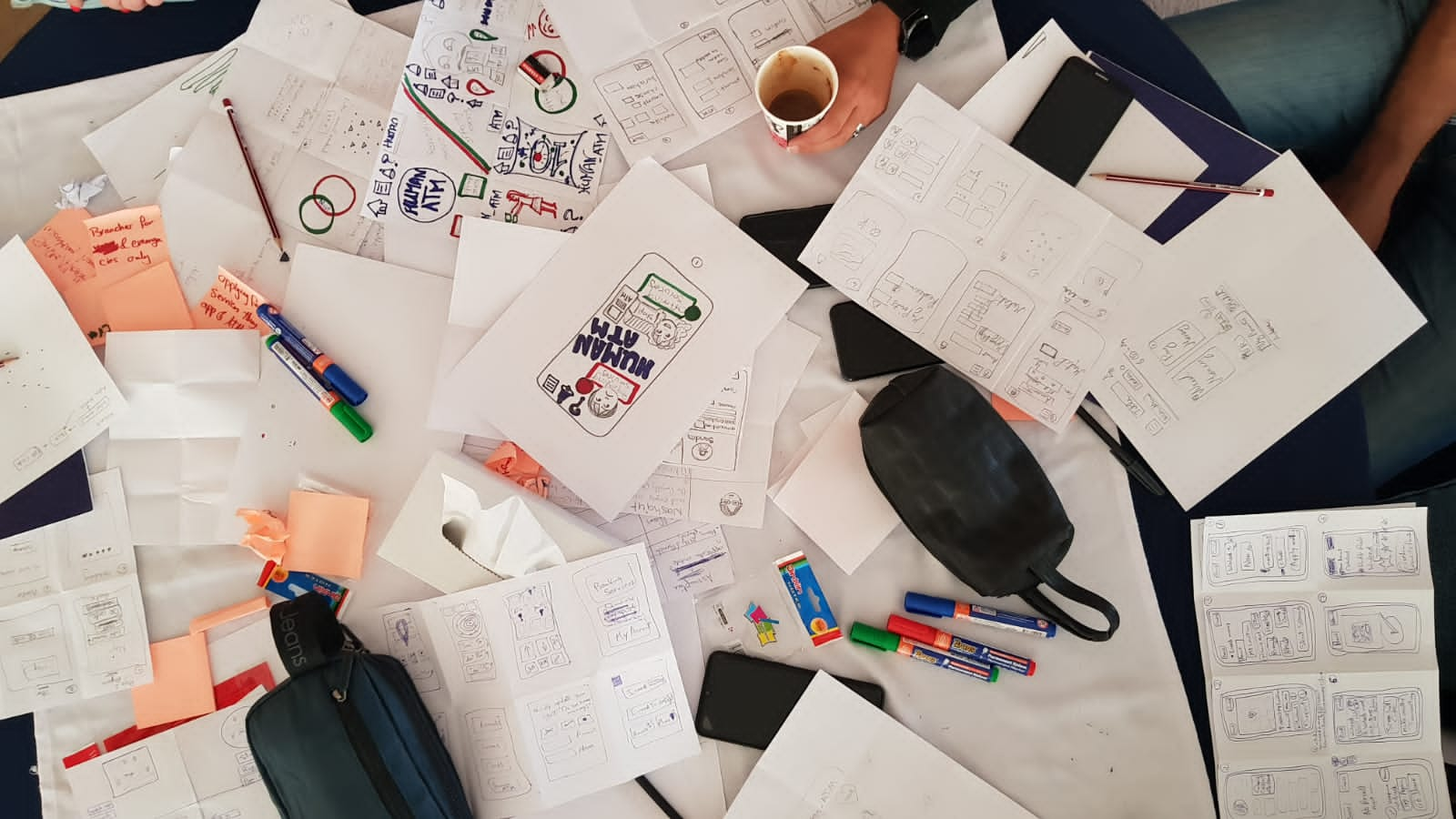How Netflix discovered that 78% of users were clicking the wrong button—and why your analytics can’t tell you what users are actually thinking
The Analytics Mystery Hidden in Plain Sight
Here’s a scenario that happens daily across product teams: Your analytics dashboard shows a clear problem—users are abandoning a critical flow at a specific step. The funnel visualization reveals exactly where users drop off. You know the what, but understanding the why requires a completely different approach.
This disconnect between data and insight costs companies millions in misdirected optimization efforts. Teams spend months A/B testing interface changes based on assumptions about user behavior, only to discover that the real issue was something their analytics couldn’t reveal.
The breakthrough always comes from the same source: watching and listening to real users navigate your product. Within hours of user research sessions, teams consistently discover that user behavior that seems irrational in analytics makes perfect sense when you understand user context, motivation, and mental models.
The Analytics Illusion: When Data Creates False Confidence
In the age of sophisticated analytics platforms, teams are drowning in data but starving for insight. Google Analytics shows you bounce rates. Mixpanel tracks user actions. Hotjar reveals click patterns. Yet according to recent product management surveys, teams consistently struggle to understand why users behave the way they do.
The User Research Analytics Problem:
- Data abundance, insight scarcity: Teams have more metrics than ever but less understanding of user motivation
- Correlation confusion: Analytics shows what happens together, not what causes what
- Context blindness: Numbers lack the human context that explains behavior
- Solution bias: Teams optimize metrics without understanding underlying user needs
This creates a dangerous cycle: teams see problems in their data, make assumptions about causes, implement solutions that don’t address root issues, then wonder why metrics don’t improve.
User Research Analytics: The Science of Understanding Why
User research analytics combines quantitative data with qualitative insights to decode the story behind user behavior. It’s not enough to know that users drop off at step 3—you need to understand what they’re thinking, feeling, and trying to accomplish when they make that decision.
The What vs. Why Framework:
Analytics Tells You WHAT:
- Where users click and don’t click
- How long they spend on each screen
- Which features they use most/least
- Where they abandon tasks
- What content they consume
User Research Tells You WHY:
- What users expected to happen
- How they interpreted interface elements
- What motivated their decisions
- What frustrated or confused them
- What they were trying to accomplish
The Power of Combined Intelligence: When you layer user research insights onto your analytics data, patterns emerge that neither could reveal alone. You stop optimizing for metrics and start optimizing for user success.
The Middle East Context: Cultural Analytics vs. Cultural Understanding
For companies operating across Saudi Arabia, UAE, Europe, and the US, user research analytics becomes exponentially more valuable. Analytics might show that MENA users behave differently than Western users, but only research explains why.
Case Study: A European fintech company’s analytics showed that UAE users spent significantly longer on their account setup page compared to German users. The initial assumption was a technical issue or poor translation.
User research revealed the cultural truth: UAE users were often consulting with family members during financial decision-making processes. The “long session times” weren’t confusion—they were users literally pausing to get input from trusted advisors. This insight led to features that accommodated collaborative decision-making, significantly improving UAE market performance.
Cultural User Research Analytics Framework:
Behavioral Pattern Analysis
- Time-on-task variations: Are differences due to confusion or cultural decision-making patterns?
- Navigation preferences: Do users prefer different information hierarchies?
- Trust signal importance: What builds credibility across different cultures?
Motivation Mapping
- Individual vs. collective decision-making: How do cultural values influence user choices?
- Risk tolerance differences: What makes users comfortable proceeding or abandoning?
- Value perception variations: What benefits resonate across different markets?
The Live Product Research Methodology: Decoding User Behavior in Real-Time
Phase 1: Analytics Deep Dive (Week 1)
Behavioral Anomaly Detection:
- Identify unusual patterns in user flows
- Spot high-impact drop-off points
- Analyze feature adoption rates
- Map user journey variations
Segmentation Analysis:
- Compare behavior across user types
- Identify cultural/regional differences
- Analyze new vs. returning user patterns
- Track cohort behavior over time
Key Questions for Research:
- Where do analytics show unexpected behavior?
- What user actions don’t match our assumptions?
- Which metrics have remained stubborn despite optimization efforts?
Phase 2: Contextual User Research (Week 2)
In-Context Observation:
- Watch users navigate your actual live product
- Observe natural behavior without artificial tasks
- Document unexpected usage patterns
- Capture authentic user language and reactions
Think-Aloud Protocols:
- Ask users to verbalize their thought process
- Understand decision-making logic
- Identify points of confusion or delight
- Map mental models vs. actual functionality
Behavioral Interview Techniques:
- “Walk me through what you’re thinking here”
- “What did you expect to happen when you clicked that?”
- “How does this compare to what you hoped for?”
- “What would make this feel more natural to you?”
Phase 3: Insight Integration (Week 3)
Analytics-Research Synthesis:
- Map research insights to specific data points
- Identify root causes behind metric patterns
- Develop hypotheses for behavioral change
- Prioritize interventions based on impact potential
Cultural Adaptation Analysis:
- Compare user motivations across regions
- Identify universal vs. culturally-specific issues
- Develop region-appropriate solutions
- Test cultural assumptions against observed behavior
The User Behavior Discovery: When Analytics Miss the Real Story
A common pattern emerges across successful product companies: analytics reveal unexpected user behavior, but the breakthrough insights come from understanding user motivation behind that behavior.
Consider a streaming platform where analytics showed users frequently accessing detailed information about content. The team initially assumed users wanted comprehensive plot details and optimized for richer content descriptions.
User research revealed something completely different: Users weren’t reading the descriptions—they were looking for practical information like runtime, genre specifics, or content warnings to make viewing decisions. The information access was being used as a decision-making tool, not a content discovery tool.
The insight led to interface changes that prominently displayed the information users actually needed for their decision-making process, resulting in measurable improvements in user satisfaction and engagement.
The Lesson: Users adapt your product to meet their needs, regardless of your intended design. Analytics shows the adaptation; research explains the underlying need.
Beyond Session Recordings: Advanced User Research Analytics Techniques
Emotional Journey Mapping
- Track user emotional states throughout key flows
- Identify frustration vs. confusion vs. delight moments
- Map emotional peaks and valleys to specific interface elements
- Understand the relationship between emotion and behavior
Mental Model Validation
- Compare user expectations to actual functionality
- Identify where interface logic conflicts with user logic
- Test terminology and categorization assumptions
- Validate information architecture decisions
Contextual Task Analysis
- Observe users completing real goals (not artificial tasks)
- Understand how your product fits into broader user workflows
- Identify integration points and friction areas
- Map competitive behavior and switching patterns
The Conversion Paradox: When Better Metrics Hide Worse Experience
Many teams optimize for conversion rates without understanding user satisfaction. You can force users through a funnel with dark patterns while creating terrible long-term experience.
User Research Analytics Framework for Sustainable Growth:
Quality vs. Quantity Metrics
- Conversion Rate: Are users completing desired actions?
- Satisfaction Score: How do users feel about the experience?
- Retention Intention: Do users plan to return?
- Recommendation Likelihood: Would users suggest this to others?
Short-term vs. Long-term Success
- Immediate Completion: Users finish the task today
- Sustained Engagement: Users continue using the product
- Advocacy Development: Users become promoters over time
- Lifetime Value Growth: User relationship strengthens
The Regional Scaling Challenge: When Global Analytics Meet Local Behavior
Companies scaling from MENA to Europe and the US (or vice versa) often assume user behavior patterns will translate. User research analytics reveals where assumptions break down.
Case Study: A Saudi e-commerce platform expanded to Germany with analytics showing strong engagement patterns in their home market. German users showed similar engagement metrics but different conversion patterns.
Research revealed the cultural insight: Saudi users’ extensive browsing behavior reflected relationship-building and trust-development patterns, while German users expected more direct, efficiency-focused purchasing paths. The same interface that felt appropriately thorough to Saudi users felt inefficient to German users.
The Solution: Region-specific user flows that honored cultural shopping behaviors while maintaining brand consistency across markets.
The Uncomfortable Truth About Data-Driven Decisions
Data doesn’t make decisions—people do. And people are complex, contradictory, and contextual in ways that analytics can’t capture.
Your dashboard might show that users spend 47 seconds on a particular screen. But are they reading carefully, feeling confused, waiting for permission, or distracted by something else entirely? The number is meaningless without the story.
User research analytics gives you both the number and the story. It’s the difference between knowing that something is happening and understanding why it matters.
When you combine what users do with why they do it, you stop optimizing for metrics and start optimizing for success—both theirs and yours.
Red Flags: When Your Analytics Are Lying to You
Warning Signs You Need User Research Analytics:
- Metrics improve but user satisfaction scores remain flat
- A/B tests show statistical significance but minimal practical impact
- Users complete tasks but engagement and retention don’t improve
- Regional performance varies significantly without clear technical explanations
- You find yourself making confident assumptions about what behavioral data “obviously” means
The Data Interpretation Trap: The more data you have, the more confident you feel about your interpretations—even when those interpretations are wrong. User research keeps you honest about what your numbers actually mean.
The webkeyz User Research Analytics Framework
At webkeyz, we’ve seen countless teams make expensive decisions based on incomplete data understanding. Our user research analytics methodology combines quantitative insights with qualitative depth to reveal not just what users do, but why they do it.
Our Approach:
- Behavioral Story Mapping: Connecting data points to user motivation narratives
- Cultural Context Integration: Understanding how regional differences impact user behavior
- Emotion-Behavior Correlation: Mapping user feelings to specific actions and outcomes
- Predictive Insight Development: Using research to anticipate future user needs and behaviors
Whether you’re optimizing established products in Saudi and UAE markets or adapting successful solutions for European and US expansion, user research analytics transforms your data from measurement tool into strategic advantage.
Ready to Understand What Breaks at Scale?
The next stage in our UX Research Roadmap reveals how to maintain user experience quality as your product grows from thousands to millions of users—because UX that works at 10K users often breaks at 100K.
Want to dive deeper into user research analytics methodologies?
If your analytics dashboard gives you answers without questions, it’s time to talk.
We’ll show you what it’s not showing you.
Schedule a consultation
Until next time explore webkeyz’s case studies
and Keep Thinking!








